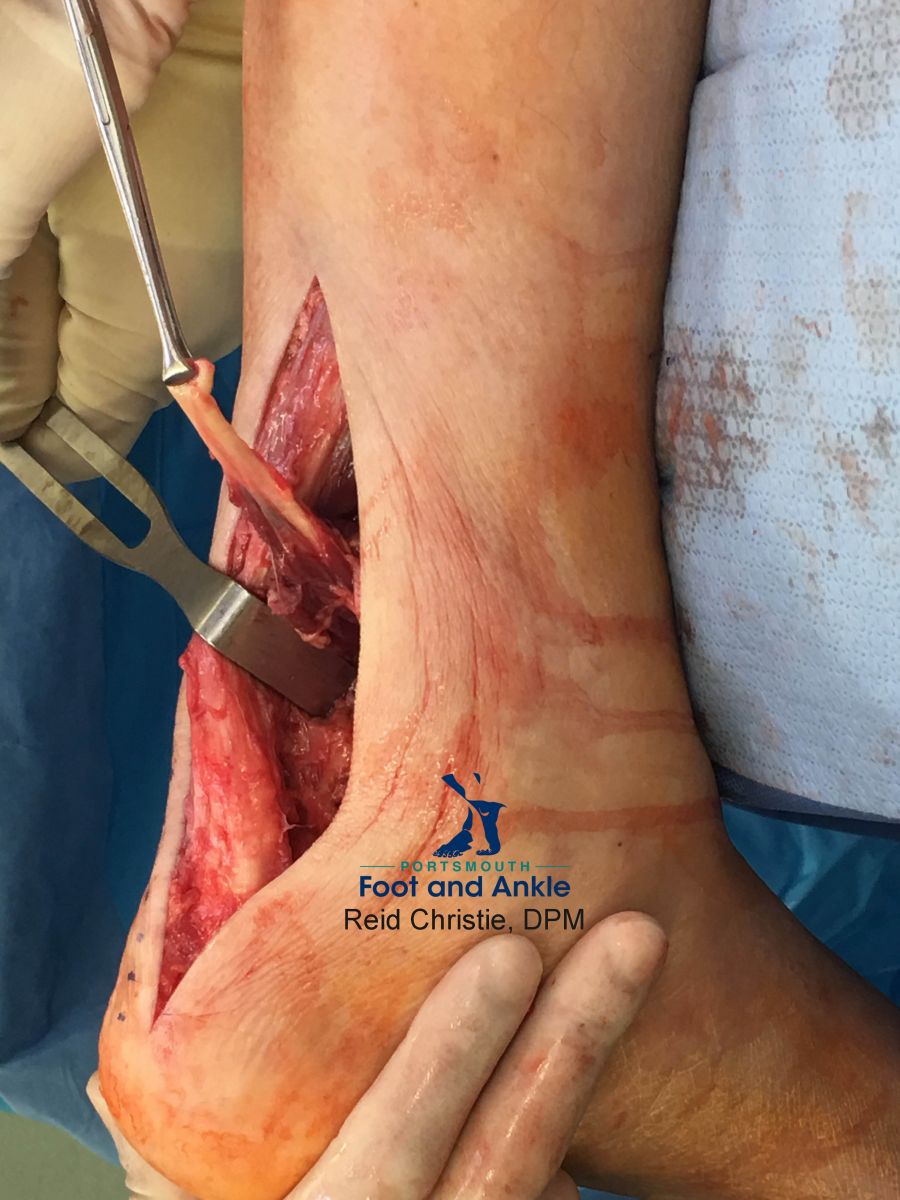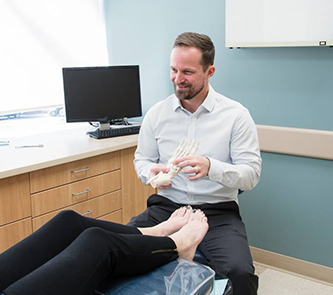Achilles Tendon Rupture
To completely understand an Achilles tendon rupture, it must first be understood how the tendon itself functions. The tendon is comprised of two muscles in the back of the leg coming together to form a single tendon which attaches at the posterior heel. These two muscles, the gastrocnemius muscle and the soleus muscle, both function to plantarflex the foot and ankle and assist in propulsion during the gait cycle.
Injuries occur when too much stress is exhibited upon the tendon through explosive movements (such as a quick, propulsive movement or a quick, dorsiflexory movement about the ankle). One of the most commonly reported symptoms at the time of injury is that it feels as though the back of the leg was kicked or hit by someone.
The tendon can rupture in a few different spots, and this dictates the type of repair that is required.
Insertional rupture is when the tendon rips away from the back of the calcaneus (heel bone). This requires reattaching the tendon to the bone through surgery.
A little higher up in the tendon is a portion known as the watershed region. This is the most common area for an Achilles’ tendon to rupture due to a decreased blood supply to the area. This often times requires direct, end to end repair of the tendon (if possible).
Lastly, and even higher up, the tendon can tear or rupture in what is known as the “midsubstance” region. When this occurs, direct repair is preferred, but not always possible. So what happens when direct repair of the tendon is not possible? When direct repair is not possible the next best option is often times what is referred to as a tendon transfer, which essentially moves a tendon to a new location and ultimately gives it a new function. Most often times the tendon of choice would be the flexor hallucis longus tendon. When rerouting this tendon, the main goal of the procedure is to re-establish the plantarflexory force (up and down motion) of the ankle. The FHL tendon is transferred into the calcaneal bone (heel bone) and with proper healing and rehabilitation, the function is restored.
(Pictured below is the flexor hallucis longus tendon before it is rerouted into the calcaneus)

Pay Your Bill
Make a payment online through our payment portal or Care Credit!
Portsmouth Office
14 Manchester Square, Suite 250
Portsmouth, NH 03801
Nashua Office
17 Riverside Street, Suite 205
Nashua, NH 03062
Website Hosted by SC Digital



